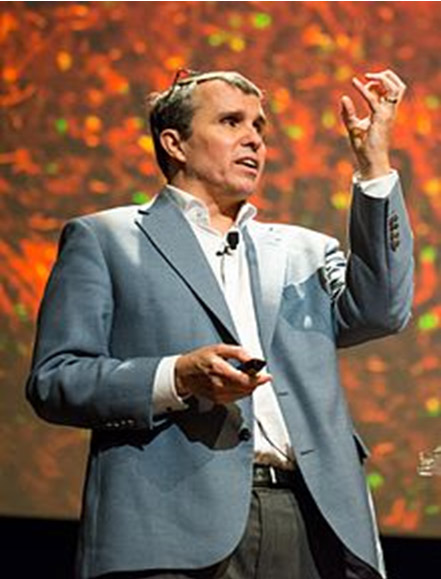报告题目:Imaging Cellular Dynamics from Molecules to Organisms
报 告 人:Eric Betzig (2014年诺贝尔奖)
报告时间:2016年3月15日(星期二)下午2:00
报告地点:生物物理所9501会议室
主 持 人:徐涛研究员
报告人简介及报告内容摘要:

Eric Betzig is an Americanphysicist based at the Janelia Farm Research Campus in Ashburn, Virginia. He has worked to develop the field of fluorescence microscopy and photoactivated localization microscopy. He was awarded the 2014 Nobel Prize in Chemistry for "the development of super-resolved fluorescence microscopy" along with Stefan Hell and fellow Cornell alumnus William E. Moerner.
Betzig Lab develops novel optical imaging tools in an effort to open new windows into molecular, cellular, and neurobiology.
Abstract
The hallmark of life is that it is animate. To gain a better understanding of how inanimate molecules assemble to create animate life, it is necessary to image the dynamics of living organisms noninvasively at high resolution in both space and time. However, there exist inevitable tradeoffs of spatial resolution, speed, non-invasiveness, and imaging depth. I will describe three methods that balance these tradeoffs in different ways: super-resolution structured illumination microscopy, which we apply to study endocytic and cytoskeletal dynamics at the plasma membrane; lattice light sheet microscopy, which we use to image the rapid three-dimensional dynamics of single molecules, cells and embryos; and adaptive optics, which recovers optimal resolution of fine neural processes deep in the brains of zebrafish and mice.
Eric Betzig’s Biography
Eric Betzig is a Group Leader at the Janelia Research Campus in Ashburn, VA. His thesis at Cornell University (Ph.D. ’88) and subsequent work as a PI at AT&T Bell Labs involved the development of near-field optics – an early form of super-resolution microscopy. Tiring of academia, he resigned, and in 1995 published the concept that would become localization microscopy while unemployed. He eventually served as VP of R&D at Ann Arbor Machine Tool Company, but resigned in 2002 when the technologies he developed there failed commercially. In 2005, he and his fellow Bell Labs expatriate, Harald Hess, used photoactivated fluorescent proteins to bring super-resolution localization microscopy to reality, building the first prototype in the living room of Dr. Hess. For this work, he is a co-recipient of the 2014 Nobel Prize in Chemistry. Today, he continues to work in super-resolution, as well as with non-diffracting light sheets for the 4D dynamic imaging of living systems and adaptive optics to recover optimal imaging performance deep within aberrating tissues.